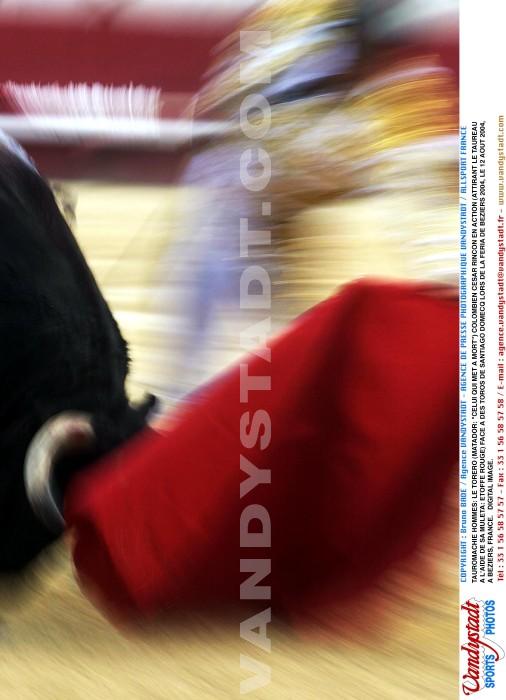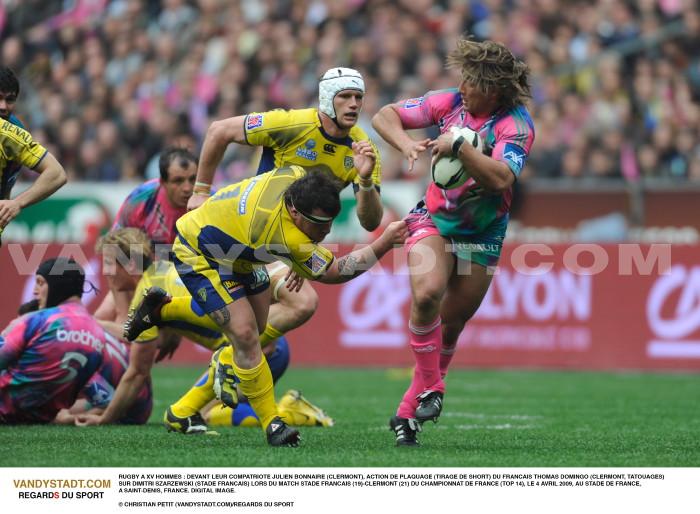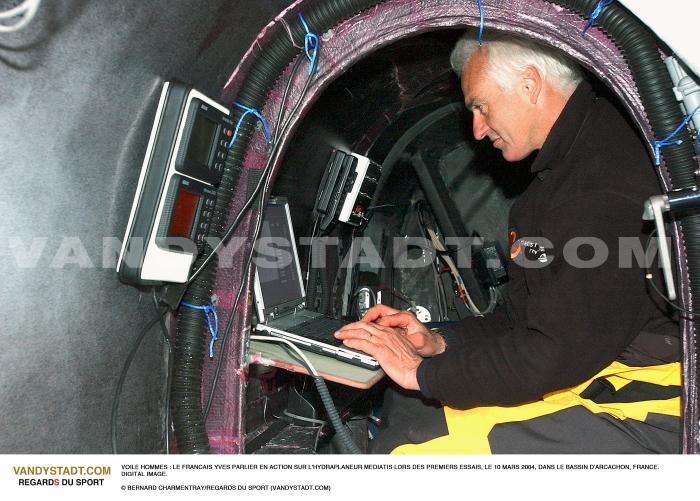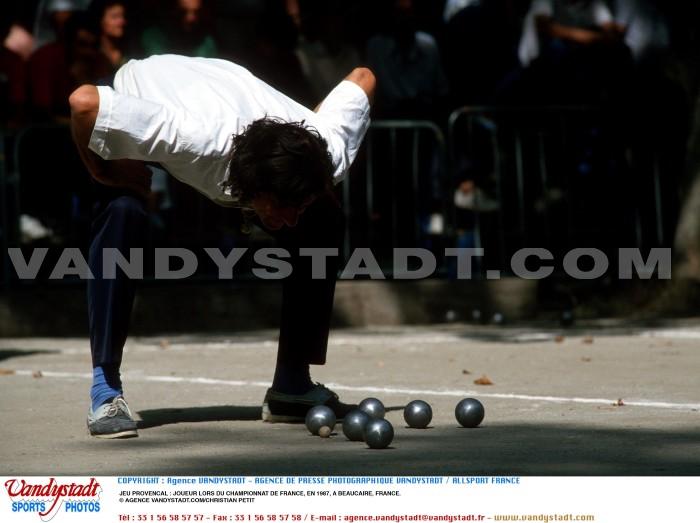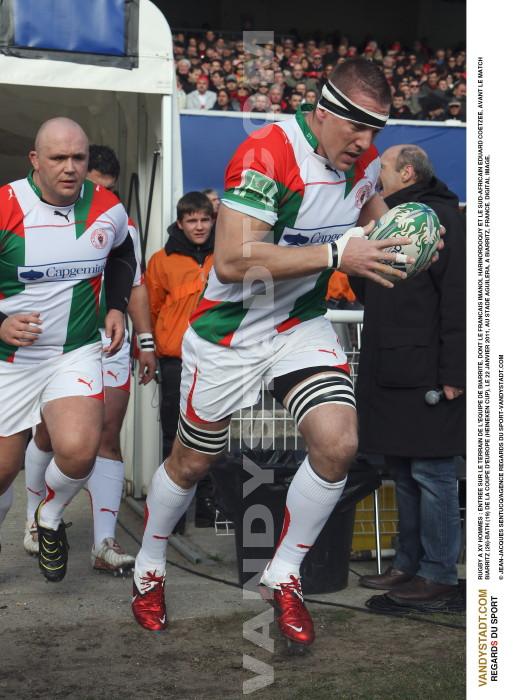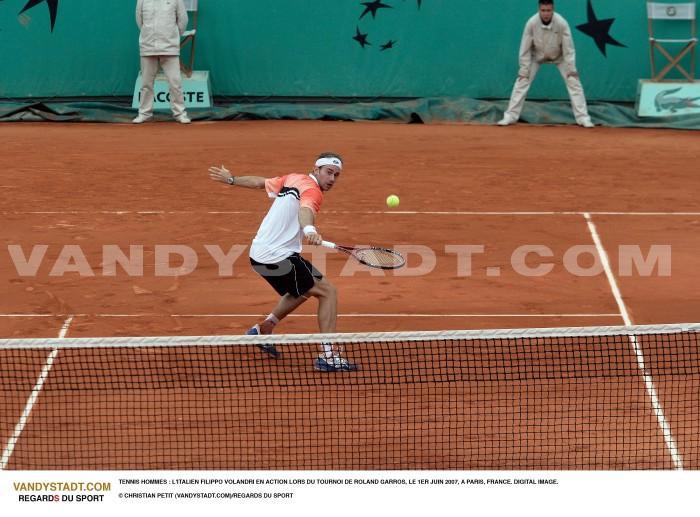Ski nautique - Waterskiing history
Waterskiing
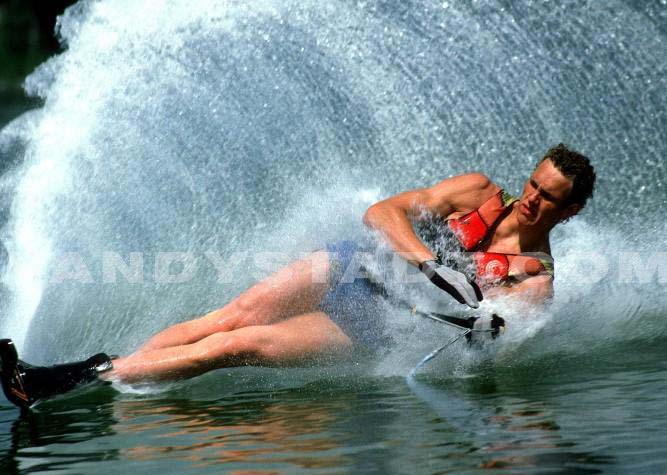
History
The skiing was born around 1920 when an Alpine skier who looked at Lake Annecy developments of a motorboat, had the idea of being towed by the same boat wearing skis. Equivalent tests were conducted by the American Ralph Samuelson in the U.S. on barrel slats and alpine skis. Following these tests, he made 2 plates (2.65 m long and 23 cm wide) with leather bindings.
Further tests were made at Cannes by Petersen Norwegian jumper who made many fast followers. Skis were quickly modified.
The Federation International Water Ski (IWSF) has changed its name in 2009 International Waterski and Wakeboard Federation (IWWF).
The French Federation
In the 1920s, the first French club, one of the first in the world is created in Juan-les-Pins. In 1947 the French Federation was founded by Maguy Savard, who remained President until 1958.
11 000 redundant - 226 Club
Today, water skiing has 6 subjects, 92 federations and approx. 30 million practitioners worldwide (12 million for the U.S., 10 million for Europe). Water skiing is the 3rd American sport!
Despite numerous requests to the IOC, the skiing is still not entered the Olympic program.
Some dates:
- 1924: 1st patent for manufacturing water skis filed by American Fred Waller, the Dolphin Akwa Skees directly towed by a boat like the surf board.
- 1930: Emergence of skis "modern" with fixings and pull cord in his hand.
- 1937: Revelation of skiing to the public during the International Exhibition of Paris.
- 1946: France, Switzerland and Belgium created the first International Union to become the International Federation in 1988.
- 1947: First European championships in Evian.
- 1949: First World Championships in Juan-les-Pins.
- 1972: Water skiing was a demonstration sport at the Olympics in 1972.
- 1995: World Championships of Roquebrune-sur-Argens together 183 competitors (61 skiers and 122 skiers) from 45 nations.
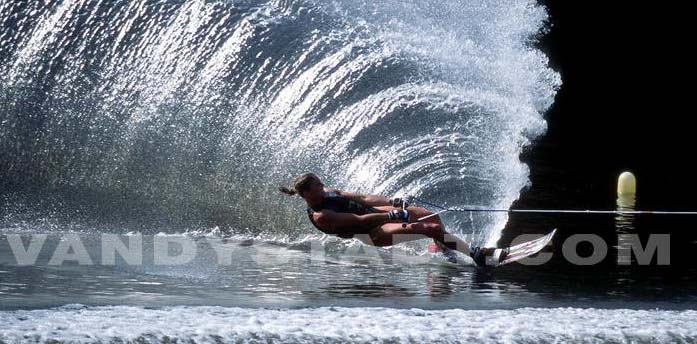
Rules and Principles
Principle
On one or two skis, competitors, drawn by a boat moving on water.
Equipment
Boats
The total length must be between 5 m and 6.50 m, width between 1.80 m and 2.50 m.
They must have a pole placed in the axis between the middle and rear, which has a height between 65 and 120 cm above the water level when the boat is stationary and unoccupied.
Motorboats "inboard" or "outboard" may be used.

Speed boats
All speeds must be established taking into account current where it exists.
Rates should vary more than plus or minus 1 km / h. In each discipline, for that speed is correct, it must be controlled by the Purser and within the limits specified.
Skis
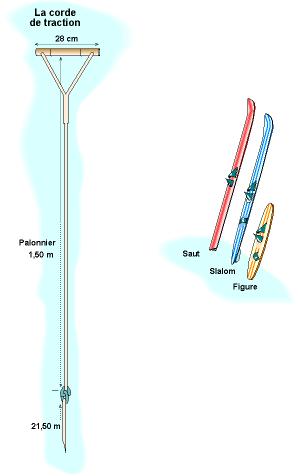
They are fiberglass, carbon or wood, measuring between 1.70 and 2.40 m long and 15 cm wide with soft bindings for the feet. Maximum width of ski: 30% of the total length of the ski.
Ski jumping: length between 172 and 238 cm
Skis figures: length between 102 and 112 cm
Ski Slalom: length between 160 and 180 cm.
The main rules
The main disciplines are:
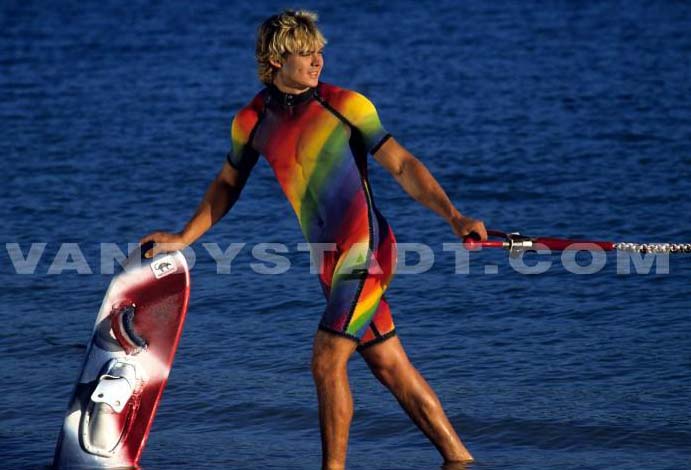
Slalom
Course of 6 buoys (3 on each side of the channel) with gradual acceleration of the boat for each term in increments of 3 km / h.
The slalom course, 259 meters long and 23 meters wide is materialized by buoys. Some yellow define the channel portion of the vessel, the other red arranged in staggered rows must be circumvented by the skier. According to the rules of the World Union Water Ski, Slalom must occur at a maximum speed of the boat 58 km / h for men and 55 kph for the ladies.
The length of rope is initially of 18.25 meters. After each successful passage, the rope is shortened. It goes well at 16 m and 14.25 m, 13 m, 12 m, 11.25 m and then fraction of 0.50 m. At least 11.25 m, the string is shorter than the distance of the channel buoys. The winner is the one who has spent most of the buoys with the shortest rope having passed all its passages about every length of rope speed past.
This extremely spectacular discipline is practiced on a mono-ski. The slalom ski has three characteristics that determine its place: the length, morphology and different building materials.
More than 8 in 10 licensed practicing slalom, more than half the figures and the fourth jump.
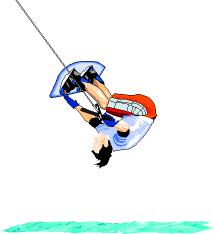
Figures (tricks)

The competition takes place in 2 rounds of 20 seconds each in which the skier must make up figures (between 12 and 15 for best). This discipline requires skis shorter and lighter than the skis used for other disciplines. Moreover, they do not drift to be able to turn more easily.
There are fifty different figures. A path is made 'rope in hand' and 'rope walk'.
Before the competition, figurative gives the jury its term sheet (the order of sequences). The jury of five judges awards points according to difficulty and speed of execution.
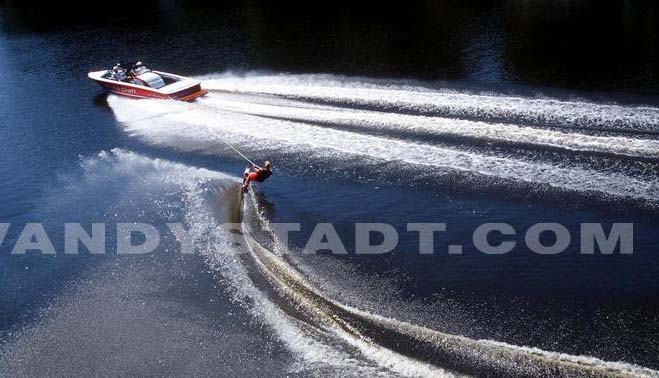
I
lya three ways to practice the figures :- On two skis
- On a ski
- Tensile rope walk.
For each practice, we find the same figures:
- Skidding: lateral shift to 90 °,
- The 180 ° turn right or left
- The 360: Loop,
- The 540 °: a turn and a half
- 720 ° the two full turns,
- The seven: move one foot over the rope.
Finally, all these figures can be performed either in the wake or a wave. The score obviously varies depending on the difficulty of FIG. The lowest score is 20 points for the skid to 2 skis and the highest of 700 points for somersaults up to 1000 points for the double somersault.
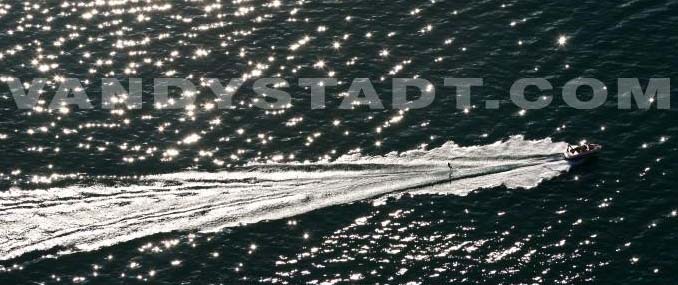
The jump
It is in this discipline to make the jump as long as possible. The rate of arrival on the board, the momentum and position during the phase of flight conditioning performance. But a good jump, must also end with a good reception, the result of a correct position, balanced. In the playoff, the skier is entitled to 2 jumps and jumps to 3 final. Only the best performance of the sleeve is retained.
The jump takes place on a platform with an overall length of the water of 6.40 meters to 6.80 meters and a height of 1.65 m for women and 1.80 meters for men; its width is between 3.70 m and 4.30 m.
The maximum speed of the boat must remain within the limits of 51 km / h for women and 57 km / h for men. The optimum speed propulsion on the board is obtained by the skier by making 'cuts' (diagonal trajectories to the axis of the boat).
This test is performed on special skis wider. Once wood, they are now made of kevlar or carbon fiber.
Helmet and safety vest are required.
In 1947, the world record jump was 18.60 m. The first skier to jump over 50 meters was the American Suy Derwood: 50,10 m in July 1970. The 60 m mark was surpassed in 1983 by Australian Glen Thurlow.
The current record is 74.20 m in men and 56.60 m in women.
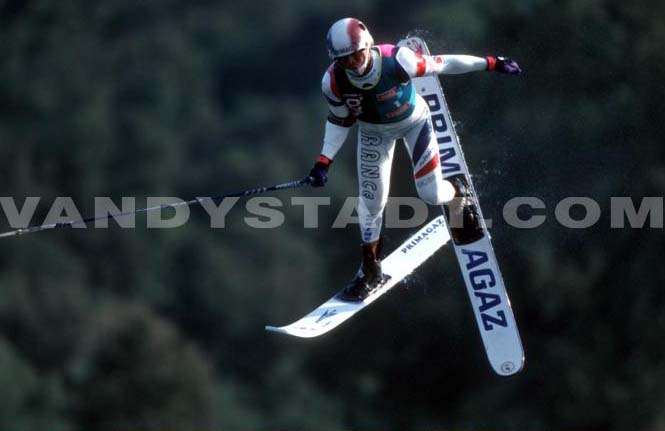
The combined This title is awarded the aggregated results in the three previous disciplines ..
The barefoot or barefoot
The discipline of water skiing without skis, the barefoot, was invented in 1947 by Dick Pope Jr. He shook all concepts recognized. The first competition took place in 1950 at Cypress Gardens, the challenge was to remain standing as long as possible. Some starting from the shore, lying on his back! It forced the critics to revise their judgments. Unlike those who predicted such a product without a future, it causes a growing appetite among the public and has recently been codified and regulated. The barefoot is a sport of insiders, enthusiasts and not lit. Skiers (they are called like that even without skiing!) Must perform at competitions all 3 traditional disciplines: slalom, tricks and jumping. The first world championships were held barefoot in Canberra AUS in 1978. This discipline requires special technical conditions: enhanced combination, a boat capable of towing a skier with a free speed between 65 and 70 km / h.
- The slalom the skiers must cross the boat wake as many times as possible in 2 rounds of 15 seconds each, one forward and one astern. The rope length is 23 m, the speed is between 65 and 70 km / h.
- Figures
the skier should carry a maximum rotation of figures, or figures somersault specific barefoot with the rudder passed around the neck or held by the teeth.
- Jump
the goal is to land as far as possible. Rope 23 m max. 67 km / h. Springboard top 46 cm and a length of 2 m. A new technique to project forward, has to cross 25 m.
The world record of barefoot
women
- The three records are held by the South African Nadine De Villiers : slalom: 17.0 (2001), figures in 4400 pts (2001) and jumping 20.6 (2000).
men
- Slalom: Brian Fuchs USA 20.5 (1994)
- Figures: Keith St. Onge USA 9400 pts (2002)
- Jump: Brett New AUS 26.1 (1999)
Speed skiing
Combining the power boating and water skiing, shopping, newly introduced in France, symbolize the need for new thrills.
Discipline recent skiing, they are a team sport: the pilot, copilot and the skier.
This speed test is subject to safety regulations very accurate. In particular, it prohibits the skier out of the wake. In fact, each fall requires the pilot to come and take the skier, increasing the time of passage of the boat. This discipline is practiced on a wide ski, long and thick designed to give the skier more stability.
Skiers slide to 160 km / h by boat from reaching the 1,200 horsepower!
In 1960, the Californian Chuck Stearns, living legend of skiing, beating the world record speed of 126 mph or more than 200 km / h.
The water ski tow
Recently, our ski boat are being equipped with cables and pylons as our ski on snow in winter. Here is the latest method to drive water ski set in the 80s: the boat lift (ideal for beginners), recalling the telerope mountain.
Adaptable across (a body of water in just 4 hectares), the water lifts can be installed on the rivers, beaches but preferably on natural or artificial lakes.
Technically, just 4 at 5 towers cantilevered supporting deflection pulleys. The length of tours varies between 600 and 1200 m. The cables provided for skiers are attached to a main cable, in constant motion. So the cable that serves as boat tractor. The departure is from a ramp disposed at right angles to the main cable. Therefore, the speed increases gradually.
The boat lift allows everyone to move freely: slalom, tricks, jump, barefoot or simple slides. The lift ideally suits the needs of each. Beginners are initiated rapidly techniques of this sport. These lifts are certified by the international water skiing. Any event can take place on a lake with a ski lift by respect for international rules. The safety rules are observed: a distance of 90 m between practitioners, a skier every ten seconds. Simultaneously, twelve skiers can use a lift, which represents more than 4,000 revolutions per day.
The first European Championships Boat lift took place in July 1985, Germany, organized by the Federation Internationale de Ski Nautique. These ten nations competed on ten traditional disciplines. This new technique has therefore all the features of Success. Simple pull or test method, the water helps lift the breakthrough of a healthy sport to an audience more attentive. Today there are 90 installations worldwide, including 7 in France.
Wakeboarding
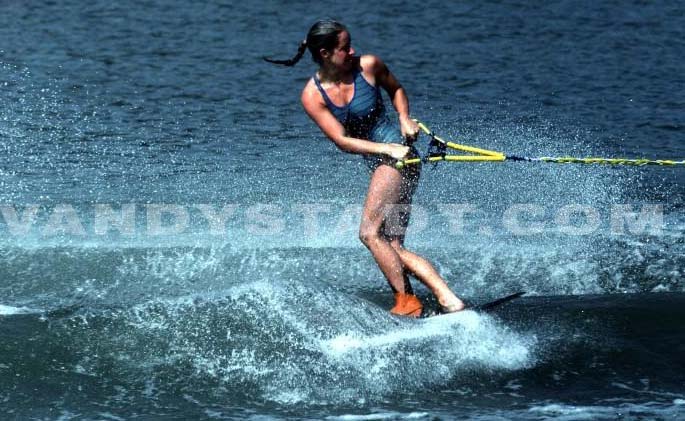
History
The wake board or "wake", then called Waterboard skurf or skiboard, was born in Marina del Rey in Los Angeles, California in the 70s fusion of water skiing and surfing. In the 80s, Tony Finn had the idea to market a model under the name "skurf" who was then its first official name. The French Maurice Lucas brought in turn a copy in France; snowboarders Jean-Philippe Garcia and Gilles Becker were the first warning lights in adapting their techniques snow surfing "skurf. The French Association of Waterboard was created by Jean-Philippe Garcia in 1980, organizing the first national competitions. In 1994, the AFW is integrated into the French Federation of skiing: a cup (one stick) and a League of France (4 stages) and a Cup event in Europe have been organized.
Some dates
- 1985: the Californian Tony Finn invented a new board, a mixture between a mono-ski and windsurfing on which he adds the foot straps.
- 1987: Maurice Lucas introduced the board in France on the basis of water Viry-Chatillon.
- 1990: the first "wakeboarding" is marketed. The first official competition took place.
- 1993: The first World Championship was held .- 1995: introduction of the "twin tips" boards with front and back symmetrical shape.
- 1996: Wakeboard made its first appearance in the X-Games were held in 1996.
Equipment
A board wakeboarding is between 130 and 150 cm for 32 to 42 cm wide. The weight varies from 2 kg to more efficient and more for others. The bindings are footstrap rotation and adjustable strap with a flexible back to slippers and amounts.
Principles
Wakeboarding is a combination of snowboarding, surfing, skating and skiing. It is a small board towed by a ski lift or a boat.
The wakeboarder or "rider" is perpendicular to the plate and moves on the wave of the boat. He may try to
ers exercises: the slalom wake, great curves through the wake, figures (using the wake or modules) and jump, jump waves. Boards based on both skiing and snowboarding figures ( "regular" or "goofy").
There are two formulas based on the jump: freestyle and free-ride
In the test of free-style, wakeboarder must, within 25 seconds chained two courses (or "run") of five jumps / figures each. In the free ride, wakeboarder performs a free course in two waves and two double rows droites.L 'use of "Skilines" or lift allows the rider to perform spectacular jumps. Top world are able to perform 5 to 10 different somersaults!
Currently, three boards wakeboard are sold against a pair of water skis! In the U.S., there are more than 3 million riders.
A famous trick is the half cab front flip, somersault before the start with reverse!
Among the best French of wakeboarding in the 90s is Florent Carmin , former specialist barefoot.
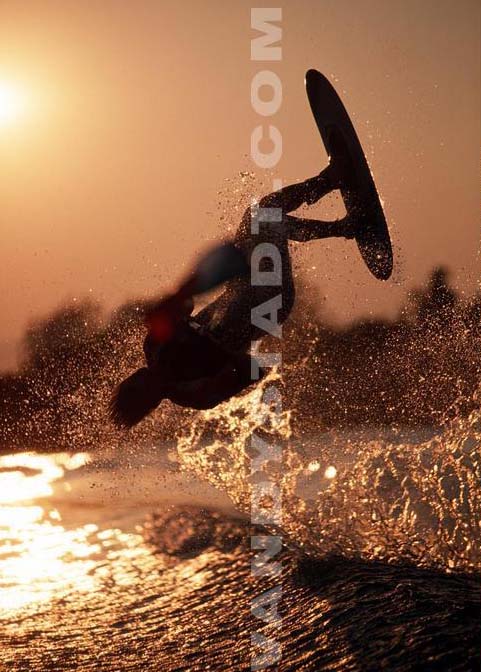
Glossary
Backside: how to move, you're making square with support on the heels (left for regular, to the right for goofy).
Fakie: the board is in the opposite direction of your normal position. If you're regular, you end up with the right front foot (left foot in front for goofy).
Front side: how to move, you're making square with support on the toes (to the right for regular, left for goofy).
Goofy: You have the right front foot.
Graber: catching the edge of the plate during a jump (360 ° grab for example).
Rudder: this is the end of the rope and allows you to keep being towed.
Regular: you have the left foot forward.
Wake: trace left by the boat behind him foaming course but also two more or less big waves on each side. Put more weight in the stern increases the height of waves from the wake.
Skurf: type of plate with an asymmetric front and rear, and the presence of a single drift at the rear.
Trick: Figure
Twin-Tip: type of plate symmetrical with possibility of a drift on both sides of the plate.
Backroll: a backward somersault with edge grip front or backside.
Fatsac: rubber bag-shaped "sausage" filled with water (100 to 250 liters) used for ballasting the ship to get a big wave.
Mobius: somersault combined with a 360 °, 540 °.
Nose: The nose of the board.
Raley: where is the famous rider sends his board behind him over his head, then he brings in a downturn.
-The best French specialists: Rodolphe VinhTung, double European champion, winning the European X Games, and World Games in Akita, Japan in 2001. Francois Roy of France champion in 2000 and 2001 and Emmanuelle Dumolardchampion of France in 2001.
The best specialists in Europe: the French Rodolphe Vinh Tung-FRA (double European champion in 2000, winning the World Games in 2002), NavarroMaxentius, European champion in slalom in 2000 and Daniel Harf which was imposed in June 2000 in a stage of the U.S. Pro Wakeboard Tour.
World record beaten!
In June 1999, a boat pulled 80 skiers in wakeboarding.
Fly-Wakeboard
Latest Sliding aquatic, it is derived flysurf and is to do on a wakeboard tow by a kite. Polar explorers use it by replacing the surf with a pair of skis.
Copyright Sportquick/Promedi








